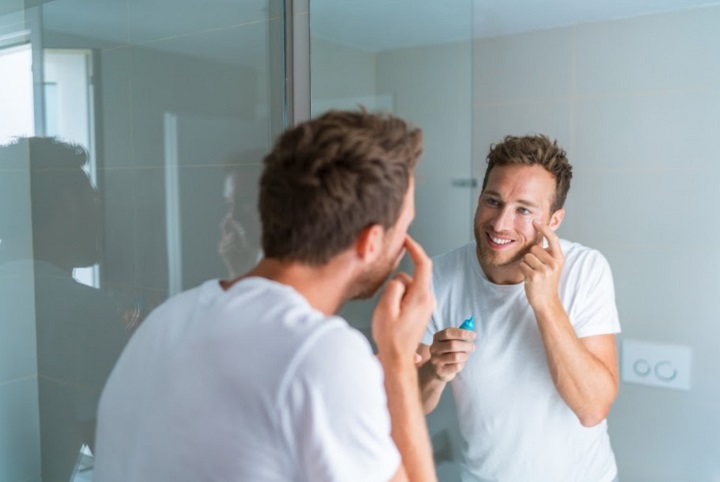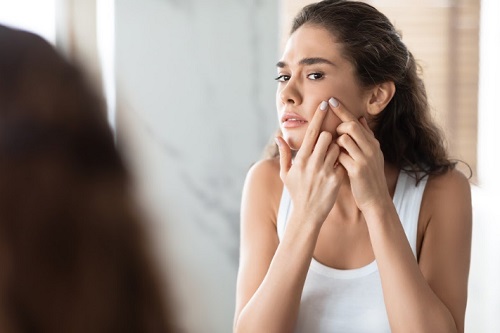Acne: it’s a familiar foe for many of us, turning up uninvited and often leaving its mark. But did you know that acne isn’t a one-size-fits-all issue? Just as we have different skin types, acne comes in various forms, each with its own set of quirks and treatments.
Why does this matter? Because knowing your specific acne type is like having a secret weapon in the battle for clear skin. It means you can tailor your skincare routine to tackle the root of the problem, instead of throwing random products at it and hoping for the best. In this guide, we’ll break down the three most common types of acne, revealing what causes them and, most importantly, how to treat them effectively.
1. Blackheads (Open Comedones)
If you’ve ever noticed tiny dark spots dotting your nose or chin, chances are you’ve encountered blackheads. These small, dark lesions are a common type of acne, and while they might be frustrating, they’re usually harmless.
What Causes Blackheads?
Blackheads happen when a hair follicle gets blocked with a mix of excess sebum (oil) and dead skin cells. Unlike whiteheads, which stay closed beneath the skin, blackheads are open at the surface. This allows the clogged material to oxidize when exposed to air, turning it dark and giving the blackhead its characteristic color.
While anyone can get blackheads, hormonal fluctuations (often experienced during pregnancy, puberty, or menstruation) can sometimes increase oil production and make them more likely. If you suspect your blackheads might be related to hormones, it’s worth exploring hormonal acne treatment options with your dermatologist.
Banishing Blackheads: Treatment Options
Luckily, blackheads are relatively easy to manage with the right approach:
- Topical Retinoids: These vitamin A derivatives are superheroes for unclogging pores and preventing blackheads from forming in the first place. Look for over-the-counter options with adapalene or ask your dermatologist about prescription-strength retinoids like tretinoin.
- Salicylic Acid Cleansers: This ingredient helps to exfoliate the skin’s surface, removing dead skin cells and excess oil that can contribute to blackheads. Choose a gentle cleanser formulated with salicylic acid and use it regularly.
- Gentle Exfoliation: Incorporating a gentle exfoliator into your routine a few times a week can help keep pores clear and prevent blackheads from building up. Look for products with small, smooth beads or chemical exfoliants like alpha hydroxy acids (AHAs) or beta hydroxy acids (BHAs).
Avoid harsh scrubbing or picking at blackheads, as this can irritate your skin and potentially lead to scarring. If you’re struggling with persistent or severe acne, consult a dermatologist. Reputable clinics like Cumberland Skin, among others, can offer expert guidance and personalized treatment plans.
2. Whiteheads (Closed Comedones)
If you’ve ever noticed small, raised bumps that look like tiny grains of rice under your skin, you’re likely dealing with whiteheads. These closed comedones are a common type of acne, and while they might seem similar to blackheads, they have a key difference.
What Sets Whiteheads Apart?
Whiteheads form in the same way as blackheads—dead skin cells and excess oil clogging a pore. However, with whiteheads, the pore remains closed at the surface. This trapped gunk builds up beneath the skin, creating a small, round bump that’s white or skin-colored.
Taking on Whiteheads: Effective Treatments
Like blackheads, whiteheads require a targeted approach for effective treatment:
- Topical Retinoids: These pore-clearing powerhouses work wonders on whiteheads, too. They help to regulate skin cell turnover, preventing those pesky plugs from forming and keeping your pores clear.
- Benzoyl Peroxide: This over-the-counter ingredient is known for its ability to kill acne-causing bacteria. Look for cleansers or spot treatments containing benzoyl peroxide to help reduce inflammation and zap whiteheads.
- Gentle Cleansing: While it might seem tempting to scrub away whiteheads, resist the urge. Over-washing and harsh scrubbing can strip your skin of essential oils, triggering more oil production and potentially worsening your acne. Stick to a gentle cleanser formulated for acne-prone skin, and use lukewarm water.
Remember, patience is key. It may take a few weeks to see significant results from these treatments.
3. Papules
Ever woken up to a bright red bump that feels a little sore to the touch? If so, you’ve probably encountered a papule. Unlike blackheads and whiteheads, which are primarily clogged pores, papules are a sign of inflammation, and they can be a bit trickier to manage.
What’s Happening Beneath the Surface?
Papules form when the bacteria inside a clogged pore triggers an inflammatory response. This leads to redness, swelling, and tenderness around the affected area. You won’t see a white or black ‘head’ like with comedones because the pore remains closed, but the inflammation makes itself known through the bump’s appearance.
Soothing the Inflammation: Papule Treatments
Managing papules requires a multi-pronged approach that tackles both the bacteria and inflammation:
- Topical Antibiotics: These can be prescribed by a dermatologist to help kill the acne-causing bacteria and reduce redness.
- Benzoyl Peroxide: This over-the-counter ingredient also works as an antibacterial agent and can help dry out the papule.
Inflammation isn’t just about bacteria; it can be influenced by diet, stress, and sleep patterns. Making healthy lifestyle choices like eating a balanced diet, managing stress, and getting enough sleep can help reduce overall inflammation and potentially lessen papule breakouts.
Your Clear Skin Journey Starts Now
Acne can be frustrating, but armed with the knowledge of your specific acne type, you’re now equipped to take control of your skin. Remember, consistency is key when it comes to treating any type of acne. Don’t get discouraged if you don’t see results overnight—give your chosen treatments time to work their magic.
If you’re unsure of your acne type or if your breakouts are severe or persistent, don’t hesitate to reach out to a dermatologist. They can provide personalized guidance and recommend treatments that are right for your unique skin.



















